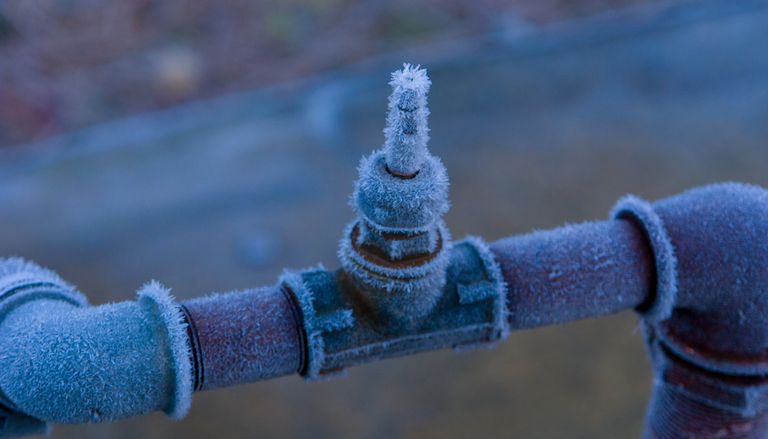Were you hunting for guidance about How To Avoid Freezing Pipes?

Winter can damage your plumbing, especially by freezing pipes. Right here's how to stop it from occurring and what to do if it does.
Intro
As temperatures decrease, the danger of icy pipes increases, possibly bring about pricey repairs and water damages. Understanding just how to stop icy pipes is important for house owners in cold climates.
Avoidance Tips
Protecting susceptible pipelines
Cover pipes in insulation sleeves or make use of warm tape to protect them from freezing temperature levels. Focus on pipelines in unheated or outside locations of the home.
Heating strategies
Keep indoor spaces adequately heated up, especially areas with pipes. Open up cabinet doors to permit warm air to distribute around pipelines under sinks.
How to determine icy pipelines
Look for decreased water flow from faucets, unusual smells or noises from pipes, and visible frost on subjected pipelines.
Long-Term Solutions
Structural modifications
Consider rerouting pipes far from outside walls or unheated areas. Include added insulation to attics, basements, and crawl spaces.
Upgrading insulation
Buy high-grade insulation for pipes, attics, and wall surfaces. Appropriate insulation helps preserve regular temperature levels and decreases the danger of icy pipes.
Securing Outside Pipes
Garden pipes and outside taps
Disconnect and drain pipes garden pipes before wintertime. Set up frost-proof faucets or cover outside faucets with protected caps.
Understanding Frozen Pipelines
What creates pipes to ice up?
Pipelines freeze when subjected to temperature levels listed below 32 ° F (0 ° C) for extended periods. As water inside the pipelines ices up, it increases, taxing the pipe walls and potentially triggering them to break.
Threats and problems
Icy pipelines can lead to supply of water interruptions, property damages, and pricey repair work. Burst pipelines can flood homes and create extensive structural damage.
Indications of Frozen Water Lines
Recognizing icy pipelines early can prevent them from bursting.
What to Do If Your Pipes Freeze
Immediate actions to take
If you think frozen pipes, keep taps open up to eliminate stress as the ice melts. Make use of a hairdryer or towels soaked in warm water to thaw pipes gradually.
Conclusion
Stopping frozen pipes calls for proactive procedures and fast reactions. By comprehending the reasons, signs, and preventive measures, home owners can protect their plumbing during winter.
6 Proven Ways to Prevent Frozen Pipes and Protect Your Home
Disconnect and Drain Garden Hoses
Before winter arrives, start by disconnecting your garden hoses and draining any remaining water. Close the shut-off valves that supply outdoor hose bibs and leave the outdoor faucet open to allow any residual water to drain. For extra protection, consider using faucet covers throughout the colder months. It’s also important to drain water from any sprinkler supply lines following the manufacturer’s directions.
Insulate Exposed Pipes
Insulating your pipes is an effective way to prevent freezing. Pipe insulation is readily available at home improvement stores and is relatively inexpensive. Pay close attention to pipes in unheated areas such as the attic, basement, crawl spaces, or garage. Apply foam insulation generously to create a buffer against the cold. You can also wrap your pipes in heat tape or thermostat-controlled heat cables for added warmth.
Seal Air Leaks
Inspect your home for any cracks or openings that could let in cold air. Seal any holes around the piping in interior or exterior walls, as well as the sill plates where your home rests on its foundation. Additionally, make sure to keep your garage door closed unless you’re entering or exiting. Leaving it open creates a significant air leak that can lead to frozen pipes.
Allow Warm Air Circulation
During cold snaps, it’s essential to allow warm air to circulate evenly throughout your home. Leave interior doors ajar to promote better airflow. Open kitchen and bathroom cabinets to help distribute heat consistently around the rooms. If you have small children or pets, be sure to remove any household chemicals or potentially harmful cleaners from open cabinets for safety.
Let Faucets Drip
A small trickle of water can make a big difference in preventing ice formation inside your pipes. When temperatures drop significantly, start a drip of water from all faucets served by exposed pipes. This continuous flow helps prevent the water from freezing. Additionally, running a few faucets slightly can relieve pressure inside the pipes, reducing the chances of a rupture if the water inside does freeze.
https://choateshvac.com/6-proven-ways-to-prevent-frozen-pipes-and-protect-your-home/

As an avid person who reads on How To Avoid Freezing Pipes, I figured sharing that excerpt was beneficial. Do you know someone else who is truly interested in the topic? Feel free to promote it. Thanks for being here. Please check up our blog back soon.
Schedule A Service Call